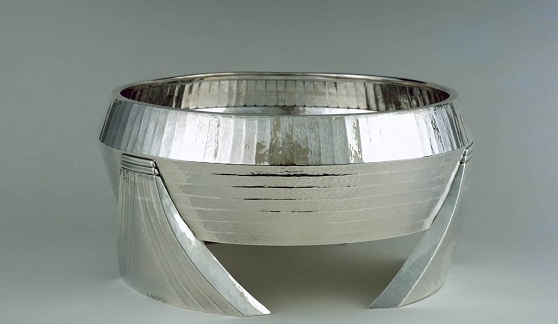Behind the Scenes of the Samuel M. Nickerson Lecture Series
February 25, 2013
Named for the man who commissioned the historic mansion the Driehaus Museum lives in today, the Samuel M. Nickerson Lecture Series is one of our most popular programs. Every year, we bring in five speakers who are experts and scholars on topics as wide-ranging as the Newport mansions, Edith Wharton, and the development of taste specific to America’s Gilded Age (to name a few from 2012).
The Driehaus Museum’s own Anna Wolff, Administrative and Programs Assistant, spends hours reading scholarly books on the decorative arts, searching other museum exhibitions, and watching YouTube videos to pull together a blockbuster slate of speakers each year. For this blog, she talked about the history and ongoing inspiration for the series.
Tell me a little bit about the history of the Nickerson Lecture Series at the Driehaus Museum—when and why was it launched? Why was it named after Samuel Nickerson?
Anna Wolff: Well, I wasn’t here in 2008 when the museum launched the series, but the focus is to situate this amazing building into the context of prevailing tastes in art, architecture, and design. Simply put, it’s to help our visitors see that this building is both tremendously unique and typical at the same time. I think that what we know of Mr. Nickerson indicates that he like this house was a man of opulence, risk, and beauty, yet still one of many self-made wealthy Chicagoans who were influenced by the fashions of the day.
How does the Series work? What can people expect to experience while attending one of the lectures?
Wolff: I like to have a little bit of everything, in an attempt to showcase the wide range of history, design and innovation in this fascinating time period. This year each lecture focuses on either a different area of the country or is objects-based. The goal is to encompass the material culture that built the world in which Samuel Mayo Nickerson lived, so that each year we see a slightly larger picture of the 19th century. Although Mr. Nickerson may have never gotten to see San Francisco in its architectural heyday, or visit Mark Twain in Connecticut, these spaces were born out of the same idealism that Nickerson and his architects were influenced by here in Chicago. During the Aesthetic Movement, it was believed that beauty should exist in everything, that handmade is always better than machine-made, and that living with art edifies the soul. Those ideas appear in every lecture in some way—and I like to think Mr. Nickerson is happy about that.
The lecturers we’ve had in the past have covered a wide range of topics. What are some of your favorites?
Wolff: Hmm…this is a hard one! We’ve had so many fascinating topics and talented speakers over the years. I think Ulysses Dietz last year was a crowd pleaser—I think I could listen to him for hours. Aesthetic Movement Interiors at the New York City Seventh Regiment Armory [with Chelsea Bruner, City University of New York, 2011] was also a really fascinating topic. Who knew those military men had such good taste?
These lectures have some of the most loyal supporters—we see the same faces again and again. What kind of feedback do you get from the community about the impact of these lectures, and do they influence your planning for upcoming seasons in any way?
Wolff: Sure they do! Our visitors are pretty vocal about what they like and what they don’t. (And most of them know my phone number too!) They typically have glowing reviews but occasionally they let me know if the speaker was difficult to understand or to hear. I factor in their reactions about previous lectures when searching for new faces. Some of our guests faithfully attend all five lectures every single year, so they really do feel a connection to the Series. It’s always gratifying to see people enjoying something that I have had a hand in crafting.
We just announced our fourth season, and I know you’re excited about all five lectures. Tell me a little bit about how you decide on this wide range of topics and speakers—what was your process in that?
Wolff: I have a folder that I put potential topics, such as new publications or exhibits or professors and curators, into, which includes a lot of recommendations from our guests as well. By late summer every year, it’s pretty full! Then I start to think through what would be interesting to our audience and categorize the topics, making sure we don’t have too much of one area represented. Once I streamline the list into about 8 to 10 names and topics, the Museum staff gives feedback and then the speakers get an official invitation. If they accept we are thrilled! Then there are some logistical travel arrangements and paperwork, and then our members get first choice for tickets when we release the series in January.
Anything you would want to do with the Series in the future—say, if you had an unlimited budget?
Wolff: How about we take this series on the road? Instead of seeing slide shows lets go see the real thing!